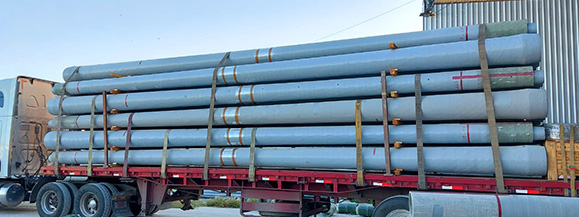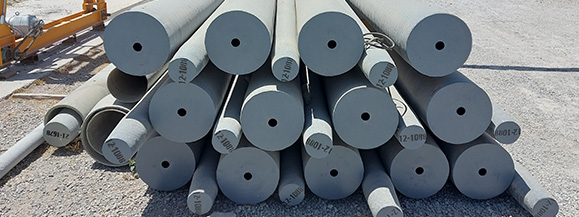Telephone poles are essential pillars of modern communication. From rural villages to urban cities, these structures hold the cables and equipment that connect millions of people every day. Traditionally, wood, steel, and concrete have been the standard materials for poles.However, in recent years, fiberglass telephone poles have emerged as a strong alternative, offering durability, sustainability, and performance advantages that address the challenges of today’s infrastructure needs.

Advantages of Fiberglass Telephone Poles
Durability and Resistance
Unlike wooden poles that are vulnerable to rot, pests, and harsh climates, fiberglass poles are highly resistant to corrosion, humidity, chemicals, and extreme weather. This makes them particularly effective in coastal areas, tropical regions, or zones with high levels of environmental stress.
Lightweight and Easy Installation
Fiberglass poles are significantly lighter than concrete or steel. This makes transportation easier and lowers the need for heavy machinery during installation. In remote or hard-to-reach areas, this characteristic reduces time, costs, and logistical challenges.
Low Maintenance Costs
Once installed, fiberglass poles require minimal maintenance. They do not rust, crack, or warp, which reduces the need for frequent inspections or costly replacements.
Safety and Non-Conductivity
Fiberglass is a non-conductive material, which provides a major advantage for telecommunications and electrical networks. This non-conductivity enhances safety for both utility workers and communities, especially during storms or accidental contact with live wires.
Applications of Fiberglass Poles in Telecommunications
Rural and Urban Telecommunications Networks
Fiberglass telephone poles are ideal for expanding connectivity in rural regions where logistics are complex. At the same time, in urban areas, they blend seamlessly into modern infrastructure projects while supporting fiber-optic cables and wireless systems.
Underground-to-Overhead Transitions
In many cities, underground networks eventually require transition to overhead lines. Fiberglass telephone poles provide the perfect bridge, resisting soil moisture and supporting telecommunications equipment without degradation.
Smart Cities and Modern Infrastructure
As cities evolve into smart cities, infrastructure demands poles that can house sensors, cameras, and 5G equipment. Fiberglass poles, thanks to their design flexibility, are adaptable to these modern requirements.

Environmental and Economic Benefits
Sustainable Materials and Longevity
Fiberglass poles have a long service life, which reduces the need for frequent replacements and minimizes environmental waste. This durability translates into fewer resources used over time.
Cost Efficiency Over Time
Although fiberglass poles may involve a higher upfront investment, their reduced maintenance, long lifespan, and easier installation lower total life-cycle costs. In other words, companies save more in the long run.
Reduced Carbon Footprint Compared to Traditional Materials
Concrete and steel production have significant environmental impacts. Fiberglass production, in comparison, has a lower carbon footprint, and the longer life span of fiberglass poles contributes to sustainability goals.
Comparison with Traditional Telephone Poles with Fiberglass telephone poles
Fiberglass vs. Wood Poles
Wood is affordable but vulnerable to decay, termites, and environmental stress. Fiberglass eliminates these issues.
Fiberglass vs. Steel Poles
Steel poles are strong but heavy and prone to corrosion. Fiberglass offers similar strength with less weight and no rust.
Fiberglass vs. Concrete Poles
Concrete is durable but extremely heavy, requiring complex transport and installation. Fiberglass provides the same reliability with easier handling.
Real-World Use Cases and Industry Adoption of Fiberglass telephone poles
Growing Use in Telecommunications
Telecommunications companies worldwide are adopting fiberglass poles to enhance the reliability of networks and reduce operational costs.
Utility Companies Choosing Fiberglass Poles
Electric and telecommunication utilities are integrating fiberglass structures in projects where durability and safety are priorities.
Adaptation in Harsh Environments
From coastal regions exposed to saltwater to industrial zones with chemical exposure, fiberglass poles prove to be more resilient than traditional alternatives.
Conclusion
Fiberglass telephone poles are reshaping the way we think about infrastructure. With their durability, safety, and cost-efficiency, they outperform traditional materials in almost every category. While the initial investment may be higher, their long-term benefits reduced maintenance, enhanced safety, and environmental sustainability make them the preferred choice for the future.

 Eléctrica
Eléctrica
 Telecomunicaciones
Telecomunicaciones
 Alumbrado público
Alumbrado público
 Hidráulica
Hidráulica

